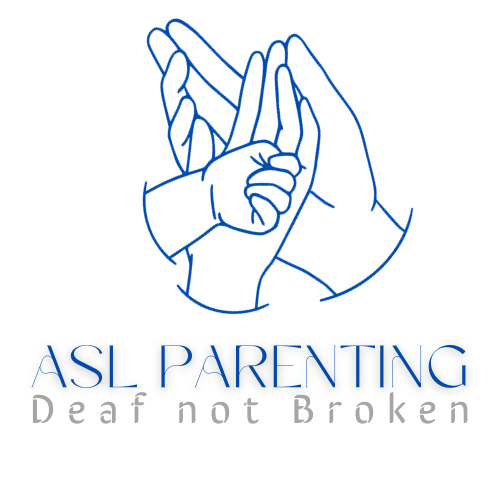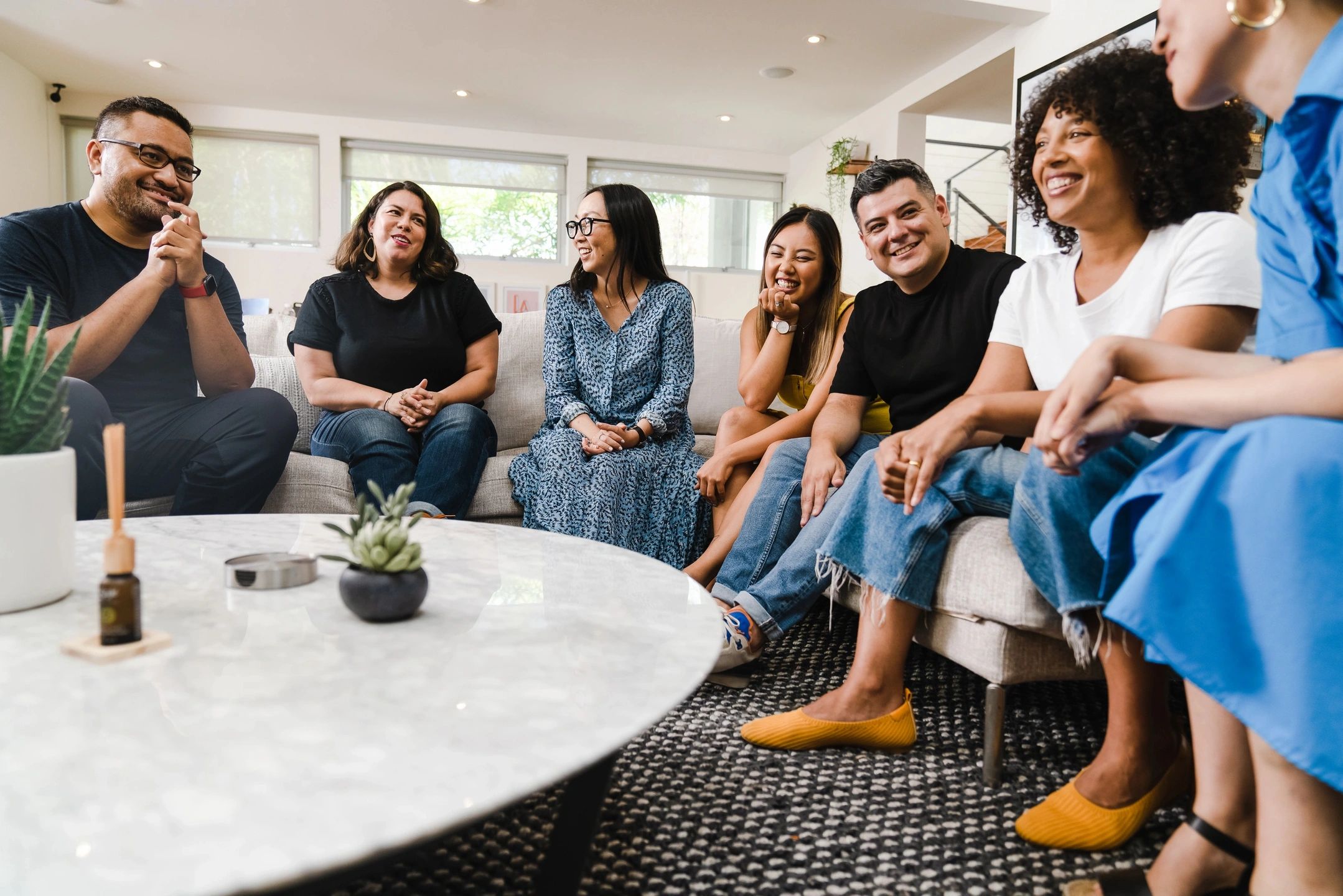Welcome to ASL Parenting. Today we’ll be exploring the different ways we connect and communicate across cultures, between mainstream American and American Deaf community.
Hearing and Deaf Communication Norms
Communication is the bridge you build while walking across it. Between the “Hearing” and “Deaf” communities, many conversations have plummeted over the last 100 years, because neither community really understood the other.
On a national scale, the relationship between the Deaf and hearing population has been improving, but due to the spontaneous nature of entry into this conflict (random chance with the birth of deaf children to hearing parents) this struggle has to be confronted every day by new families raising deaf children.
Your Deaf Child’s Unique Journey
As for confronting the problem from the deaf child’s perspective, it may be too dark to see the forest for the trees. It has often been said that if you teach your babies sign language, they will be able to tell you what they want and you can avoid the “terrible twos”. That might work when they are using simple 2 -3 word sentences, but if they grow older without vocabulary and someone to communicate with, the ‘terrible twos’ can drag on angry for years! Why is it so hard? Because how do you learn the meaning of mouth shapes without the knowledge of words to link them to? How do you learn to break a word down into letters if you don’t know the word? How do you sound it out? How do you learn to read or conjugate a verb without the underlying ability to put your world into words? ASL is a deaf person’s native language, even if they have some hearing, this is obvious because even deaf teenagers who were deprived of it in their youth pick it up in a matter of weeks-months, adopting the language fluently and transitioning into “D” Deaf and embracing the community. The reverse does not and can not happen. If given a cochlear implant as a teenager, the brain will already have closed off the ability to decipher sound waves into distinguishable sounds with meaning.
To avoid this cognitive delay in your child’s development, it is important to adopt ASL early and use it regularly in the home, even when not talking directly to your deaf child.
The Role of ASL in Your Child’s Life
The role of ASL isn’t to separate your deaf child from your family unit, heritage and culture (though it has the power to if the child grows up feeling neglected), ASL is the tool that you will use to shape your child’s perception of the world. In mainstream American culture, who tend to be the confident and successful people? Those who can speak well and persuade others to collaborate with them, that is a gift that only fluency in language can give. ASL will give your child the foundation to build from, allowing them to learn second languages (like spoken and written English) complex subjects like psychology and philosophy, as well as hard facts in math and science. Without a proper grounding in their native language, they can struggle to lip read and voice in English and leave school with nothing to show for it but a 2-4 grade level in reading and math.
If you want a chance at bilingualism, start with your child’s native language and expand from there.
The Power of Bilingualism
If the goal is being able to communicate freely with your child, you will both need to become bilingual. That will require that you learn both languages first, because you already have mastery of English, learning a second language will come more easily to you. You understand that a language has grammar rules and you know what they are, so you can learn that other languages have other rules and are not merely breaking English rules.
Knowing this, you can learn how your deaf child will see the world, shaped by their visual language with its old-world grammar style. You will be able to teach them at home so they will be prepared when they go to school. Then you will be able to supplement and reinforce what they learn at school so that they excel in their education. As for their grasp on English language and culture, they will be constantly surrounded by friends, family and media that are in English; there will be no shortage of English crossover. With ASL as their native language and their safe harbor, they can begin to venture out into new linguistic territory.
The Challenges of Communication
It’s almost comical that there is such a popular push to teach sign language to babies that can hear and prevent deaf babies from learning it at all. Deaf babies in hereditarily deaf families develop language quickly, the same as hearing babies in hearing families. In fact, hearing babies with deaf parents also develop language skills with ASL at the normal rate, but deaf babies born to hearing parents can take years longer and may never catch up with their peers.
The fundamental flaw seems to be thinking that a deaf child can be made hearing if they are forced to learn to read lips and use their voices instead of signing. As a general rule, this is false. Some children with less severe hearing loss or more successful cochlear implants can pick up on verbal language. For the rest, they can spend 21 years in speech therapy trying to master these skills and barely be able to make themselves understood by the general public. That education comes at the cost of their general education. Because they spent so long struggling to grasp a language, the other subjects they are being taught never come through clearly, their math, science, interpersonal, English and other academic skills will have been greatly neglected. This is why the unemployment rate is 2x higher in the deaf community and only 58% of the deaf population chooses to be actively employed. The problem isn’t the disability itself, otherwise Deaf children raised with ASL encouragement (with Deaf or hearing parents) would be in the same position as all of the other deaf. The idea that deafness is symptomatic of greater mental damage has been categorically disproven. Your child can shine as brightly as any other child if you put in the work to help them.
Listening to Deaf Children
A vital part of communication is listening, and listening to your deaf child is a skill that becomes increasingly important. Understand their unique needs, challenges, and perspectives. Remember, they have valuable insights to share with you, even if they’re too young or don’t have the language to properly express it. What are the friction points in their communication, can you identify the things that are important to them and provide them context to understand it themselves? Or the language they need to express it? Or the solution to the frustration they may be experiencing? Even if they seem to want something that you have to say no to, given them the ability to communicate their desires and the context to understand why they want it and why it is or isn’t a good idea is an important skill. It takes language from an interpersonal barter system to an expanding stream of thought and personal analysis. Command of a language doesn’t just affect how you speak it influences how you think as well.
Embracing Deaf Culture
Curating an environment of examples, thought leaders and role models to help you shape your child’s mind and language is a big responsibility. Sometimes general exposure to your own family and extended family is enough to ingrain not only language but culture and values as well, when your child has special needs, like deafness, it is ok to look for outside help. It won’t take many years for your child to realize that they are different and wonder how different that will make their life from the rest of their family. Believe it or not, the Deaf community can probably help you. The community is made up other 1st generation deaf with hearing parents and they are a tightly knit community. There are organized clubs, events and activities in cities and towns across the nation. Expanding your friend group to include some deaf adults with hearing children and spending time with families that use ASL as their primary language will give your whole family practical experience and valuable exposure to Sign Language. That will help you improve your communication skills, and show your child that he or she isn’t alone in this experience.
As they grow your child will be able to find advice, resources and empowerment from the Deaf community and aligning yourself with that early on can prevent resentment later in life when they come across the community on their own. I have met a lot of deaf who resent the years spent trying to be somebody else, an imagined hearing version of themselves that their parents wanted when the Deaf community was being hidden from them the whole time. It is a resentful and skewed perspective with a lifetime’s worth of frustration and shame packed into it. It’s not a place you want to find yourself when you’ve spent all those years working in your child’s best interest. The fear of losing them to the Deaf community has been the self fulfilling prophecy in many families that ends in estrangement.
Consider This for Your Home
As we conclude this week we hope you’ve gained insights into the intricacies of cross-cultural communication when raising your deaf child. Even when every day is a challenge you’re building something worth the work it takes; your child’s future.
Remember, Your child is deaf, not broken. You don’t have to fix them, you just have to learn to talk to them.



